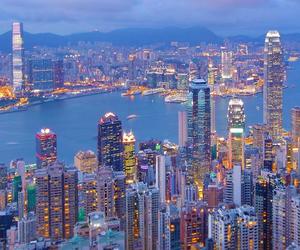China’s Greater Bay Area plans borrow much from Hong Kong and will benefit the city
Earlier this year the Chinese government unveiled its Greater Bay Area (GBA) ambitions linking Hong Kong, Macau and nine other cities in southern China. The plans aim to spur innovation, economic growth and infrastructure between the various cities.
The GBA is home to approx. 70 million people, produces 37% of the country’s exports and 12% of its gross domestic product. The economies of the 11 cities were worth US$1.58 trillion in 2017 and cover over 56,500 square kilometres.
In its effort to develop this area the government has borrowed a few policies from Hong Kong. In order to attract businesses and investors into the GBA it will need to harmonise its tax rates which range from up to 45% in China to 15% in Hong Kong and 12% in Macau. Some local governments in the GBA have already started working on policies and rebates that will reimburse residents and Hong Kong companies.
There are a few potential benefits for Hong Kong. Firstly, greater integration could boost the city’s position as a global financial hub as new businesses and investors use Hong Kong’s mature financial services ecosystem to aid their expansion and growth.
Infrastructure and connectivity will improve. New railway lines and road networks will be built and will allow greater freedom of movement. This will benefit retail and tourism especially from China and for same-day visits. Already thanks to recent transport upgrades Chinese tourism arrivals have risen by almost 20% in the first two months of 2019.
Future rail projects will also open up new markets for Hong Kong including the West Kowloon corridor that goes up to Qianhai, Shenzhen, and the central or eastern side that goes up to Dongguan.
By 2024, Hong Kong will also have a brand new US$18 billion, 3,800-metre-long runway at its airport. This, along with the economic growth opportunities that the GBA will provide, will cement Hong Kong’s place as an international aviation hub.
Another consequence of this connectivity is the effect on office rents. Rents in Central, Admiralty, Wan Chai and even Causeway Bay are expected to narrow from 2025 as ease of travel between neighbouring cities improves and the redevelopment of buildings are expected to be complete.
By borrowing from Hong Kong’s pro-business policies and dedication to transportation and connectivity, the GBA plan could emerge as a significant economic powerhouse, with Hong Kong a prime beneficiary.

